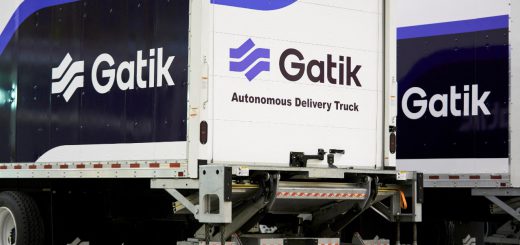6 Tips for Maximizing Shipper-Carrier Relations
As automated integrations take over the interaction between shippers and carriers, efficiencies, accuracy, and cost reductions have started to increase. For example, more integration with API, EDI, and machine learning will be advantageous to both organizations. This article describes important breakthroughs in automation and how to incorporate them into implementation approaches, as well as how it has affected shipper-carrier relations.
Tips to Strengthen Shipper-Carrier Relationships
Improved Communication and Data Exchange
The main element of collaboration in the supply chain between shipper carriers is clear communication. Orders, shipping instructions, and tracking updates necessitate the human interchange of massive amounts of data, which leads to issues like inaccuracies and burdensome processes. Fortunately, data sharing and integration have been automated, preventing typing mistakes and misunderstandings between sender and recipient. APIs and EDI enable secure transmission of essential data elements among relevant stakeholders, keeping everyone informed and aligned throughout the entire process. Such heightened transparency leads to boosted productivity, fewer disagreements, and ultimately, satisfied customers.
Some of the primary aspects influenced by improved communication shipper-carrier include:
Quote Generation:- Obtaining precise and swift rate quotations becomes possible thanks to real-time access to market conditions and available capacities offered by automated integration solutions.
Booking Confirmation:- Shippers eliminate the possibility of duplicate entries and save time by sending carriers’ confirmed bookings immediately.
Document Handling:- Therefore, these forms save paperwork, decrease human error and the ensuing unpredictability, and encompass the preparation and distribution of commercial invoices, packing lists, bills of lading, and other documents.
Milestone Notifications:- Timely alerts regarding shipment status changes keep all involved parties updated, encouraging proactivity rather than reactivity.
Enhanced Efficiency and Accuracy
In addition to being laborious and time-consuming, tasks like booking, tracking, and quoting are prone to human mistakes because of human intervention. Processing will be faster, with less paperwork and variation, thanks to automated interfaces and connections between shipper carriers. The correct information is available in real-time, which helps users manage resources, make wise decisions, and make the most of their capability. However, employees may focus on high-potential work by using automation to assist remove non-value-adding chores from their schedules.
Streamlined Workflow Processes
By connecting disparate systems and applications, automated integrations allow shippers and carriers to establish standardized workflows that promote consistency and scalability. Streamlined processes contribute to faster cycle times, reduced touchpoints, and improved overall performance. Some examples of workflow enhancements shipper-carrier enabled by automation include:
* Instantaneous quote generation based on predefined criteria
* Electronic document management for bills of lading, packing lists, and commercial invoices
* Auto-population of forms using consistent data sets
* Automatic triggering of milestone alerts and notifications
Therefore, such efficiencies between shipper carriers reduce operating expenses and increase the level of satisfaction with the other party.
Also Read:- Choosing the Right Freight Shippers for Your Business Needs
Better Decision Making through Analytics and Reporting
Utilizing predictive modeling techniques and historical trends, shipper carriers may get significant insights by integrating data sources. Intelligent planning initiatives and data-driven decision-making may be supported by the use of advanced analytical tools that can spot trends, correlations, and anomalies. Key performance indicators (KPIs) of service levels, income streams, and spending categories can be visually represented by users through customizable dashboards and reports. Armed with actionable intelligence, organizations can pinpoint areas requiring improvement, address root causes, and measure progress over time.
Scalability for Growth and Expansion
As businesses evolve, so do their logistical demands. Implementing automated integration solutions supports organic growth and geographic expansion by accommodating fluctuating volumes and diverse requirements. Rather than relying on manual intervention, shippers and carriers can rely on scalable designs to handle increasing complexity and variability. Easy system connection and quick addition of additional trading partners, locations, and services are made possible with the help of prebuilt connectors and adaptors included in the systems.
Best Practices for Implementing Automated Integrations
To accomplish automatic integrations between shipper-carriers with success, adhere to the following suggested best practices:
Establish Specific Goals:- To follow an automation strategy, it is necessary to have a numerical maturity model and defined goals. To determine whether a strategy is necessary consideration should be given to the difficult regions.
Choose the Right Technologies:- Make your integration approach selections based on your needs, budget, and degree of integration technology experience. However, based on the benefits and drawbacks of compatibility and flexibility, contrast middleware services, EDI, and API point solutions.
Work together with Trading Partners:- During integration, cooperate with carriers, suppliers, and consumers by acting as active participants rather than as “silent partners.” To ensure that changeovers are successful, encourage dialogue, and collaboration during test runs.
Keep an Eye on Performance Metrics:-Assess high and low points in efficiency. Therefore, identify areas that require improvement by routinely reviewing performance measures related to speed, accuracy, and quality.
Promote Continuous Learning and Improvement:- The capacity to follow and monitor new trends, innovations, and laws influencing the logistics environment. However, to get the most out of your investment, you must always create multidisciplinary synergy within your organization.
Conclusion
Automated interfaces represent catalysts for change in shipper-carrier partnerships by improving integration procedures. As a result, digitization benefits many companies by increasing efficiency, accuracy, and profitability. Implementing modern integration methodologies lays the groundwork for potential approaches to dealing with complex logistical difficulties while adding value to consumers and stakeholders.




Recent Comments